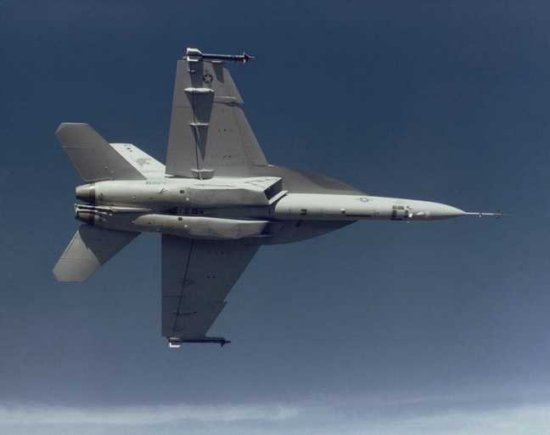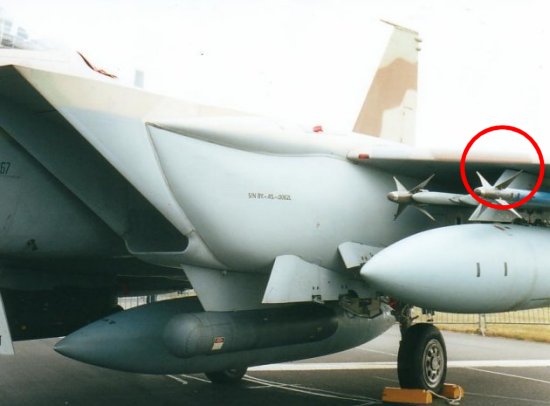|
||||||||||
|
|
||||||||||
|
||||||||||
|
|
||||||||||

The purpose of these modifications is to create vortices in a controlled and predictable manner. Vortices are often undesirable because they produce drag, but the vortices these devices create are beneficial since they delay wing stall. Stall occurs when a wing reaches a high enough angle of attack that the airflow separates from its surface. This flow separation results in a rapid loss of lift, and the aircraft may become uncontrollable.
The advantage of wing devices that create vortices is that a vortex adds energy to the airflow and increases its forward momentum. This momentum encourages the airflow to remain attached to the surface of the wing at higher angles of attack than it would otherwise. As a result, the wing is able to continue generating lift in conditions where it would have stalled. This behavior is particularly advantageous on high-performance military aircraft that need to be extremely maneuverable at high angles of attack in combat. The advantage for commercial airliners is increased safety since the plane is less likely to experience a wing stall during critical stages of flight like takeoff and landing.

The method by which these vortex devices work can be better understood by studying the above diagram of vortex generators on a wing. A vortex generator is much like a miniature wing perpendicular to the main wing. These generators are mounted at an angle of attack to the airflow over the wing so that each creates a vortex off the exposed tip, much like a trailing vortex created by a wing. The above example shows vortex generators aligned in opposite directions so that the vortices they create rotate opposite to each other. These vortices serve to increase the speed of the downstream airflow so that it is "entrained" to follow the sharp curvature of the deployed flap and remain attached to its surface. Otherwise, the airflow would likely separate from the flap causing a loss of lift.
A notched leading edge and a dogtooth work in a similar manner to increase the speed of the flow over a portion of a wing and delay stall. The difference between all of these various devices is the strength of the vortex each one generates, the conditions under which the vortex forms, and the region of the wing affected by that vortex. Vortex generators are typically used in a series to create a number of small vortices over a large portion of wing. Leading edge root extensions produce a single strong vortex near the wing root. A dogtooth also generates a single strong vortex and a notch usually generates a pair of fairly strong vortices, one from each edge. However, a dogtooth or notch is usually located toward the wingtip close to the aileron. This position helps generate a high-speed airflow over the ailerons to increase their effectiveness and improve maneuverability. Good examples of planes with dogtooths are the F-4 Phantom II and F-18E/F Super Hornet.

Related devices include the boundary layer fence and the vortilon. A fence is most often used on a swept wing as a means of controlling spanwise flow. This type of flow occurs when the air flowing over a wing moves outward towards the wingtip as it travels along the wing. This motion is undesirable because it can often cause flow separation to occur on the outer wing resulting in a loss of aileron control effectiveness. The purpose of a fence is to redirect the flow aft towards the trailing edge. A further benefit of the fence is that it can be used to create a vortex to increase the speed of the flow and delay separation.
A vortilon serves the same purpose on the lower surface of a wing, and this device is often referred to as an underwing fence for that reason. Like the traditional boundary layer fence, the vortilon can also be used to create a vortex on the underside of the wing at low angle of attack. The vortilon is far more useful at high angles, however, when a second vortex travels around the leading edge and over the upper surface of the wing. This vortex helps delay separation over the upper surface like those created by the other surfaces we have explored. Underwing pylons can also generate the same kind of vortex as a vortilon so long as the junction between the pylon and the wing is located aft of the wing leading edge, as on the F-15E Eagle shown below.

The majority of the wing modifications we have described are typically seen on military aircraft, especially
high-performance fighters. The leading edge extension, dogtooth, and fences are particularly common on these
planes since these devices increase the stall angle of attack and improve maneuverability. These modifications
are rarely seen on commercial airliners where excellent maneuverability is unnecessary. However, conventional
vortex generators are quite common on airliners to increase the effectiveness of flaps and other control surfaces
during takeoff and landing.
- answer by Jeff Scott, 15 May 2005
Related Topics:
Read More Articles:


|
Aircraft | Design | Ask Us | Shop | Search |

|
|
| About Us | Contact Us | Copyright © 1997-2023 | |||
|
|
|||